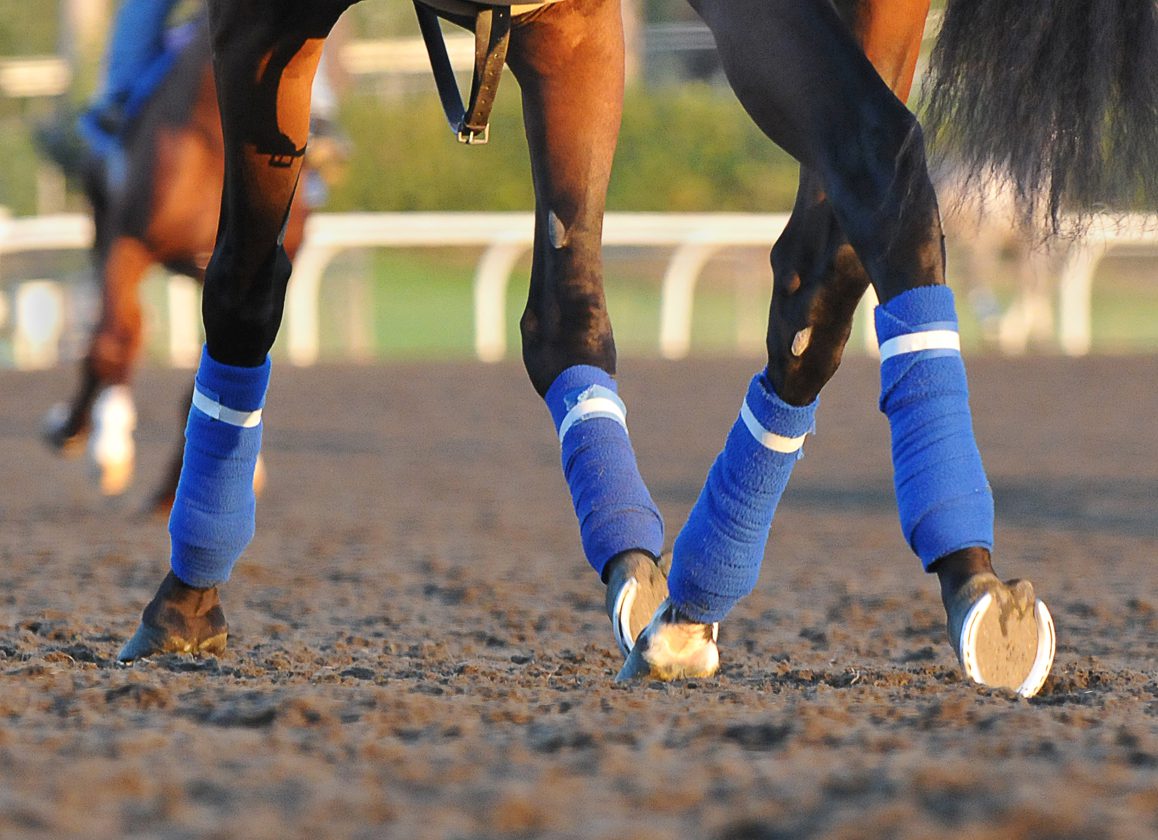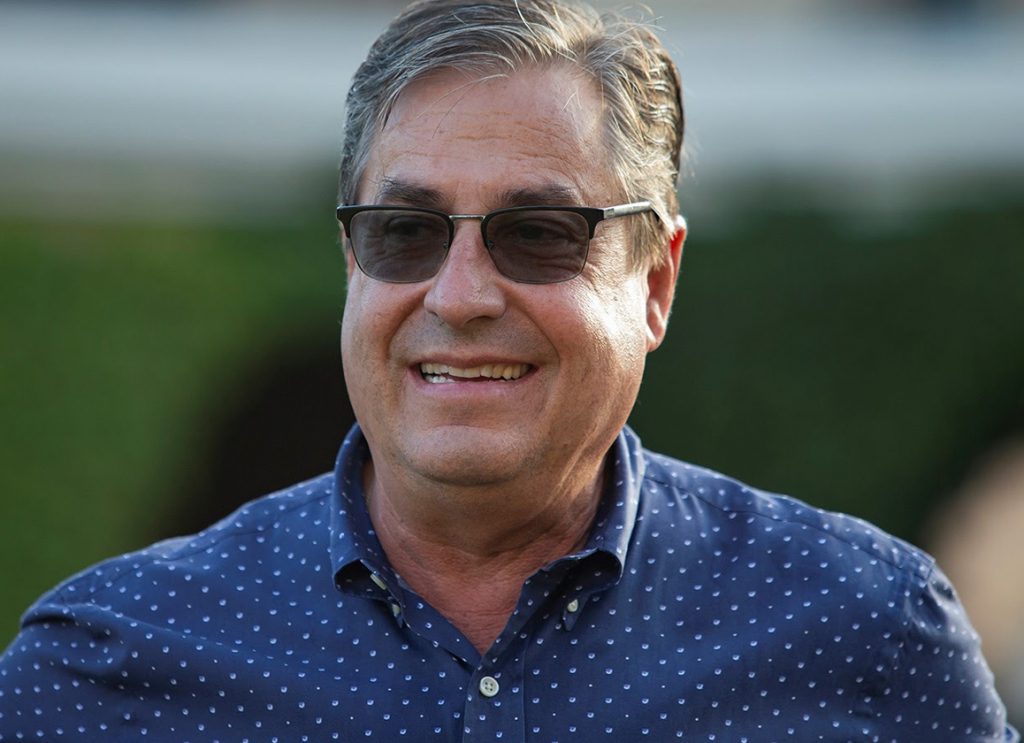By Dan Ross
Under the toughest of spotlights, the industry's collective eyes often turn to the stuff under foot. At least, that's what trainer Mark Casse did in a widely-shared TDN Q&A.
“I think we really, seriously, need to look at more synthetic tracks,” Casse said, triggering yet another cavalcade of commentary on the conceived benefits and blights of synthetic surfaces. “I believe in them. I believe they've got plenty of data to back that up.”
Former TDN writer Lucas Marquardt followed it up with an analysis of race-day fatality data through The Jockey Club's Equine Injury database.
Marquardt calculated how from 2009 through 2022, there were 6,036 fatal injuries from 3,242,505 starts on dirt in North America. That's a rate of 1.86 fatalities per 1000 starts.
On synthetics, there were 534 fatal injuries from 482,169 starts, a rate of 1.11. That's a 68% difference.
“Put another way, had dirt tracks matched the safety of synthetic tracks during that stretch, there would have been 2,437 fewer fatalities,” Marquardt wrote.
The state with arguably the deepest-albeit most contentious-relationship with synthetic surfaces is California, which mandated in 2006 the switch from dirt to synthetic surfaces at its four major tracks.
The state reversed course a few years later in the face of broad dissatisfaction with the decision. It's no easy story to tell, riven by tales of cost-cutting and skirted corners, ill-chosen materials and drainage problems.
Some point the finger, at least in part, at the failure of industry leaders to adequately study the efficacy of different materials before putting the new surfaces down.
Since then, California's relationship with synthetic surfaces has grown even more complicated, thanks to Del Mar's dirt track consistently proving among the most statistically safe nationwide-dirt or synthetic. Nevertheless, Del Mar's experiences haven't been replicated state-wide.
In 2021, California's fatality rate on the dirt (1.51) was more than twice the synthetic rate (0.73), according to Marquardt's calculations. In 2022, it was more than three times larger (1.44 vs. 0.41).
This issue promises to remain a prominent one for the near future. The Horseracing Integrity and Safety Authority recently announced that it is establishing a blue-ribbon committee to “work toward the study and ultimate introduction of more synthetic surface options in Thoroughbred racing.”
Among a fleet of promises, The Stronach Group (TSG) announced that it intends to replace the dirt training track at Santa Anita with a synthetic alternative.
Given the state's flip-flopping history with different surfaces, the TDN asked several long-time California-based trainers this question: Given the re-ignited debate on synthetics and all its accompanying arguments, should California mandate once again the replacement of its dirt surfaces with synthetics?
Eoin Harty
“Of course. I don't think they should even have to mandate it. I should think that somebody should show some f*&^ing leadership for a change and do the right thing. Instead of looking down, looking up, looking sideways and dancing around the issue, we need to address the elephant in the room: That we're in a position basically brought on by ourselves.”
“I think the time for hand-wringing and regurgitating old cliches about needing more data, more science, blah, blah, blah-that time has come and gone. No more committees, just do the right thing and put down synthetics. It's time to get on the right side of history. There won't be a Mulligan on this one.”
Note: Harty later explained the curse reflected the gravity of the situation.
John Shirreffs
“I like to tell the story of Tiago, who had won the Santa Anita Derby. In his four-year-old year at Del Mar, I had his exercise rider work him a half [mile]. He breaks off the half mile pole, the horse goes a 16th of a mile and pulls himself up, doesn't want to work.”
“I tell the rider, 'don't worry, Mike Smith will be here tomorrow. He gets along with him really well.' Break Tiago off again, goes about a 16th of a mile, pulls himself up and refused to work on that synthetic track.”
“After Zenyatta won the G1 Clement Hearst S., she refused to gallop around the [Del Mar] racetrack. She'd go about two thirds of the way around then just stop and refuse to go. The only thing we could do is walk her to the nearest gap and take her off the track.”
“Zenyatta and Tiago were both big, strong horses that really ran hard. Those type of horses really did not like synthetic tracks. I think that if you just look at how long it takes horses to adjust to the synthetic tracks when they first go in, all you do is find horseshoes on the outside of the track because they're all grabbing themselves. Their feet stop so quickly in it. Synthetic tracks only get bearable as they get older. When they first go in, they're really sticky and tough on horses.”
“As you've seen in the statistics in California, our breakdowns are really reduced. So, I don't think synthetics are the answer. Synthetics are a nice alternative. I mean, it'd be great to have a synthetic track here on the training track because you can't use the main track when it's wet. So, maybe they'd let us use a synthetic track when it was wet.”
Richard Mandella
“I think Santa Anita has the right idea to put it on the training track here to learn more about it, and hopefully it will be waterproof to train through the winter. I would take one step at a time.”
Leonard Powell
“I think the option of having a synthetic track to train on is very good. But to mandate to have all racing on synthetic, I don't think that's a necessity.”
“The notion of a bad step has been proven incorrect. We've found out through a lot of studies, when it comes to injuries, it's not a one-day, one-time thing. It's an accumulation of the pounding from the training, day-in, day-out. So, having the option to have a synthetic to train on would help that, and would lessen the number of catastrophic injuries on dirt on race-day. And it could be very useful on rainy days.”
“However, synthetics are always called all-weather tracks. But they're not really all-weather tracks. They're bad-weather tracks-they're good tracks in bad weather. In Europe, they've had problems with them in the summer months, like we had here. When it's hot and sunny, those tracks are not that good.”
John Sadler
“If you put synthetic tracks back in here, you have to have all the tracks in the country on synthetics. You can't go half and half. That doesn't work. You can't train on synthetic and expect to do well on dirt. You can't train on dirt and expect to do well on synthetic.”
“If you go back to when we had synthetics in California, I did very well on it. I could live with one surface nationwide. But because I can train on what you give me, it doesn't mean I prefer that. Not necessarily.”
“I would prefer good dirt. I think it's preferable for these horses. Why? Well, for one, they need a lot of upkeep. They need to be replaced. They need to be refreshed. They're expensive to maintain. And anybody that tells you they're not expensive to maintain is–I don't think they're being truthful.”
“There are other arguments. Are there really fewer fatalities [on synthetics]? Stats probably show that. But is that the real number, if you also look at [career ending] injuries? You don't know, right? It's hard for me to just take one study number and say, 'okay, that's all there is.' It doesn't work like that.”
“What I'm trying to say it's very nuanced. You'd have to give time for the breeders to adjust. You'd have to give time for people to purchase the right horses to adjust. A lot of what we did here wasn't well planned out. We did it and then lived with the consequences.”
Carla Gaines
“Let me start by saying I am not that well-educated on the various types of synthetic tracks. I know there have been improvements on them since they were mandated here in California in 2006.”
“Santa Anita is installing a synthetic surface here on our training track this fall and with the expected increase in rainfall this winter that would give us an alternative place to train the horses when the main track is sealed. It would also be a nice option for our grass horses as we do not have grass workouts here.”
“But for racing, I would have no interest in it. We as trainers are held responsible for every single injury. The spotlight is on us-rarely the surfaces we train on and race over. Instead of getting rid of dirt tracks, let's keep a closer eye on them, and try very hard to improve them. As one old timer told me once, 'we can put a man on the moon, why can't we figure out dirt?'”
Doug O'Neill
“I love the fact they're putting it on the training track. At Santa Anita you'll have all three surfaces. And when we get the rainy weather, you can train on a synthetic. If we had weeks of crazy weather, you could potentially run on synthetic.”
“But to replace the main track dirt for synthetic, I would be anti that. Just wouldn't want to replace the dirt.”
“We've had a pretty good sampling with Hollywood Park and Santa Anita and Del Mar all being synthetic at one time. It had its little perks during rainy season. But all in all, not a good experience for me.”
“They're really good in inclement weather, which a lot of the world has, as opposed to Southern California. So, I just don't think they're good for Southern California tracks.”
Not a subscriber? Click here to sign up for the daily PDF or alerts.








